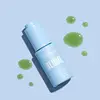What's inside
What's inside
 Key Ingredients
Key Ingredients

 Benefits
Benefits

 Concerns
Concerns

No concerns
 Ingredients Side-by-side
Ingredients Side-by-side

Camellia Oleifera Leaf Extract
AstringentMacadamia Ternifolia Seed Oil
EmollientPrunus Armeniaca Kernel Oil
MaskingCannabis Sativa Seed Oil
EmollientSimmondsia Chinensis Seed Oil
EmollientCamellia Oleifera Leaf Extract, Macadamia Ternifolia Seed Oil, Prunus Armeniaca Kernel Oil, Cannabis Sativa Seed Oil, Simmondsia Chinensis Seed Oil, Rosa Rubiginosa Seed Oil, Helianthus Annuus Seed Oil, Calophyllum Inophyllum Seed Oil, Hippophae Rhamnoides Fruit Oil, Euterpe Oleracea Fruit Extract, Terminalia Ferdinandiana Seed Oil, Tocopherol
Helianthus Annuus Seed Oil
EmollientRibes Nigrum Seed Oil
EmollientRosa Canina Fruit Oil
EmollientCalophyllum Inophyllum Seed Oil
AntimicrobialMelaleuca Alternifolia Leaf Oil
AntioxidantPalmitoyl Olive Leaf Extract
AntioxidantTanacetum Annuum Flower/Leaf/Stem Oil
MaskingChamomilla Recutita Oil
MaskingHelichrysum Italicum Flower Oil
MaskingSimmondsia Chinensis Seed Oil
EmollientRosmarinus Officinalis Leaf Extract
AntimicrobialBisabolol
MaskingCarthamus Tinctorius Seed Oil
MaskingSesamum Indicum Seed Oil
EmollientWithania Somnifera Root Extract
Skin ConditioningBeta Vulgaris Root Extract
Skin ConditioningHelianthus Annuus Seed Oil, Ribes Nigrum Seed Oil, Rosa Canina Fruit Oil, Calophyllum Inophyllum Seed Oil, Melaleuca Alternifolia Leaf Oil, Palmitoyl Olive Leaf Extract, Tanacetum Annuum Flower/Leaf/Stem Oil, Chamomilla Recutita Oil, Helichrysum Italicum Flower Oil, Simmondsia Chinensis Seed Oil, Rosmarinus Officinalis Leaf Extract, Bisabolol, Carthamus Tinctorius Seed Oil, Sesamum Indicum Seed Oil, Withania Somnifera Root Extract, Beta Vulgaris Root Extract
 Reviews
Reviews

Ingredients Explained
These ingredients are found in both products.
Ingredients higher up in an ingredient list are typically present in a larger amount.
Calophyllum Inophyllum Seed Oil comes from the Tamanu tree. This tree grows in tropical regions of Asia and Polynesian countries such as Fiji.
Calophyllum Inophyllum Seed Oil contains many fatty acids such as linoleic, oleic, stearic, and palmitic acid. These properties help your skin stay hydrated.
As an antioxidant, Calophyllum Inophyllum Seed Oil may also slow down the signs of aging. Antioxidants help fight unstable free-radical molecules. These molecules may damage your skin cells and speed up aging. By helping to stabilize these molecules, antioxidants may help slow the signs of aging.
A study from 2015 found Tamanu oil to have antibacterial and anti-inflammatory properties.
Another study from 2009 found Tamanu Oil to help absorb UV rays. However, this should not replace your sunscreen.
Due to the fatty acid content, this ingredient may not be fungal-acne safe.
Learn more about Calophyllum Inophyllum Seed OilHelianthus Annuus Seed Oil is the oil derived from the seeds of a Sunflower. Sunflower seed oil is non-fragrant. It is an emollient, meaning it helps to soften the skin.
Sunflower seed oil contains many fatty acids. The fatty acids found in sunflower seeds include (from highest amount to least): linoleic acid, myristic acid, palmitic acid, stearic acid, arachidic acid, oleic acid, and linolenic acid.
These fatty acids help the skin create ceramides. Ceramides play a role in repairing the skin barrier.
Helianthus Annuus Seed Oil helps moisturize the skin. This in turn helps the skin look more rejuvenated and smoother.
Sunflowers are rich in vitamin E.
Historians believe Indigenous cultures of North America domesticated sunflowers before corn. Thus they relied on sunflower oil for a variety of uses. One such use is moisturizing skin and hair.
Sunflower seed oil may not be fungal acne safe. We recommend speaking with a professional if you have any concerns.
Learn more about Helianthus Annuus Seed OilThis oil comes from the seeds of the desert shrub called Jojoba. It is more commonly known as jojoba oil, a non-comedogenic oil.
Jojoba oil does not contain fragrance and has many fatty-acids, making it a great soothing ingredient.
It also contains Vitamin E, a great moisturizing ingredient. Vitamin E is also an antioxidant and protects your skin against oxidative damage.
This ingredient humectant properties, meaning it helps draw moisture from the air. This helps keep your skin hydrated.
While jojoba has antibacterial properties, it is only able to kill some strains of bacteria.
Studies also show it helps in wound healing. In fact, Indigenous cultures have used jojoba as a moisturizer and to help treat burns for centuries.
Fun fact: Jojoba oil similar to natural human skin sebum, so it has a great effect on dry skin. It is also promising with helping to regulate sebum production.
Due to its fatty acid content, Jojoba oil may not be fungal acne safe. We recommend speaking with a professional if you have any concerns.
Learn more about Simmondsia Chinensis Seed Oil